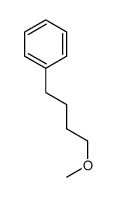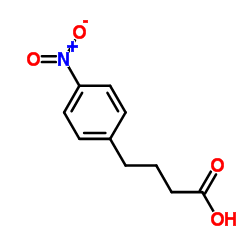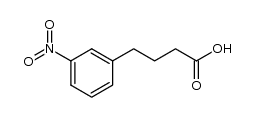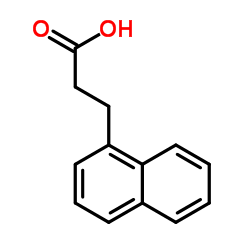1821-12-1
| Name | 4-phenylbutyric acid |
|---|---|
| Synonyms |
4-Phenylbutyric acid
Butyric acid,4-phenyl Benzenebutanoic acid EINECS 217-341-8 4-phenylbutyrate 1-Phenylbutyric acid 4-Phenyl-butyric acid g-phenyl-Butyric acid 4-Phenylbutanoic acid g-Phenylbutyric acid Benzenebutyric acid 4-Phenyl-n-butyric acid gama-Phenylbutyric acid g-Phenylbutanoic acid w-Phenylbutanoic acid MFCD00004403 γ-Phenylbutanoic acid 4-PHENYL-BUTANOIC ACID |
| Description | Benzenebutyric acid is an inhibitor of HDAC and endoplasmic reticulum (ER) stress, used in cancer and infection research. |
|---|---|
| Related Catalog | |
| Target |
HDAC |
| In Vitro | Benzenebutyric acid is an inhibitor of HDAC, inhibits the growth of NSCLC Cell Lines at 2 mM. Benzenebutyric acid in combination with ciglitizone results in enhanced growth arrest of cancer cells[1]. Benzenebutyric acid (0-5 mM) inhibits ASFV infection in a dose-dependent manner. Benzenebutyric acid also inhibits the ASFV late protein synthesis and disrupts the virus-induced H3K9/K14 hypoacetylation status. Benzenebutyric acid and enrofloxacin act synergistically to abolish ASFV replication[2]. Addition of bafilomycin A1 results in accumulation of LC3II, whereas Benzenebutyric acid (4-PBA) substantially reduces this accumulation. LPS decreases the level of p62, whereas Benzenebutyric acid reverses this decrease upon LPS stimulation for 48 h. The percentage of cells with LPS-induced AVOs is increased at 48 h, whereas Benzenebutyric acid significantly reduces this percentage. Specifically, the percentage of cells with AVOs decreases from 61.6% to 53.1% upon Benzenebutyric acid treatment, supporting that Benzenebutyric acid inhibits LPS-induced autophagy. As a positive control for autophagy inhibition, bafilomycin A1 is used. The percentage of cells with LPS-induced AVOs is reduced by bafilomycin A1 treatment. The decreased OC area and fusion index observed after Benzenebutyric acid treatment are not observed with knockdown of ATG7. Inhibition of NF-κB using BAY 11-7082 and JSH23 reduce the LC3 II level upon LPS stimulation and completely abolish the inhibitory effect of Benzenebutyric acid on LPS-induced effects[3]. |
| In Vivo | LPS induces significant bone loss and decreases bone mineral density (BMD), bone volume (BV/TV), and trabecular thickness (Tb. Th) compared with PBS alone, whereas trabecular space (Tb. Sp.) is increased. Benzenebutyric acid attenuates LPS-induced bone loss. Treatment with Benzenebutyric acid increases BMD, BV/TV, and Tb. Th. compared with LPS alone, in addition to decreasing the enlargement of Tb. Sp., but no change is observed when mice are treated with Benzenebutyric acid alone. OC.S/BS as assessed by TRAP staining is also significantly reduced when Benzenebutyric acid is administered to LPS-treated mice. However, OC.N/BS tends to decrease, although not with statistical significance, when mice are treated with Benzenebutyric acid and LPS. These results indicate that the effect of Benzenebutyric acid on OC from LPS-treated mice is to reduce its size rather than number. Consistent with these findings, a marker of bone resorption in vivo, serum CTX-1 which is elevated by LPS treatment is decreased when Benzenebutyric acid administered to LPS-injected mice. However, co-treatment with Benzenebutyric acid do not significantly affect the levels of serum ALP and osteocalcin, 2 markers of bone formation in vivo, compared with LPS alone. Benzenebutyric acid also reduces the LPS-induced rise in serum MCP-1, indicating that Benzenebutyric acid decreases systemic inflammation induced by LPS[3]. |
| Cell Assay | Briefly, viable cells, as judged by trypan blue dye exclusion, are seeded at a density of 4×104 cells/mL in 60-mm dishes in RPMI 1640 with 10% fetal bovine serum and 0.35% agarose on a base layer of 0.7% agarose. DMSO, TSA, or PB is added to both bottom and top agarose layers. Assays are performed in triplicate on at least three separate occasions, and colonies are counted at 10-14 days[1]. |
| Animal Admin | Mice[3] Female 10-week-old C57BL/6J mice are housed in the pathogen-free animal facility of IRC. Animals are randomized into the following 4 groups: vehicle control (n=5), vehicle+Benzenebutyric acid (n=6), LPS (n=6), and LPS+Benzenebutyric acid (n=6). Mice are treated with LPS in 200 μL phosphate-buffered saline (PBS) once a week (5 mg/kg, i.p.) for 3 weeks. Benzenebutyric acid solution is prepared by titrating equimolecular amounts of Benzenebutyric acid and sodium hydroxide to reach pH 7.4; mice are injected daily intraperitoneally in 200 μL PBS (or with PBS as a vehicle) at a dose of 240 mg/kg for 3 weeks. Mice are sacrificed by CO2 asphyxiation. To determine the bone mineral density (BMD) and microarchitecture of the long bone, the right femur is scanned. Scans are performed with an effective detector pixel size of 6.9 μm and a threshold of 77-255 mg/cc. Trabecular bone is analyzed in a region 1.6 mm in length and located 0.1 mm below the distal femur growth plate[3]. |
| References |
| Density | 1.1±0.1 g/cm3 |
|---|---|
| Boiling Point | 290.7±9.0 °C at 760 mmHg |
| Melting Point | 49-52ºC |
| Molecular Formula | C10H12O2 |
| Molecular Weight | 164.201 |
| Flash Point | 187.9±13.9 °C |
| Exact Mass | 164.083725 |
| PSA | 37.30000 |
| LogP | 2.42 |
| Vapour Pressure | 0.0±0.6 mmHg at 25°C |
| Index of Refraction | 1.535 |
| Water Solubility | 5.3 g/L at 40 ºC |
| Personal Protective Equipment | Eyeshields;Gloves;type N95 (US);type P1 (EN143) respirator filter |
|---|---|
| Hazard Codes | Xi: Irritant; |
| Risk Phrases | R36/37/38 |
| Safety Phrases | S22-S24/25 |
| RIDADR | NONH for all modes of transport |
| WGK Germany | 3 |
| HS Code | 29163900 |
| Precursor 10 | |
|---|---|
| DownStream 10 | |
| HS Code | 2916399090 |
|---|---|
| Summary | 2916399090 other aromatic monocarboxylic acids, their anhydrides, halides, peroxides, peroxyacids and their derivatives VAT:17.0% Tax rebate rate:9.0% Supervision conditions:none MFN tariff:6.5% General tariff:30.0% |


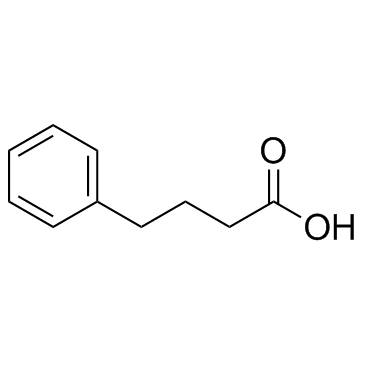

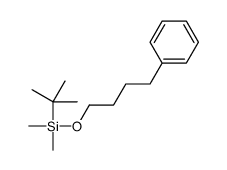



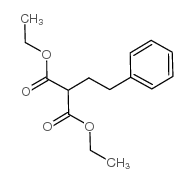
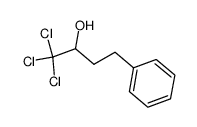

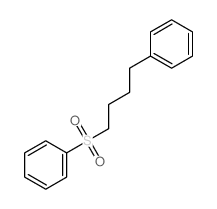
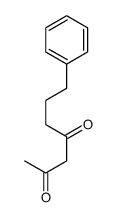
![N-[(4-hydroxy-3-methoxyphenyl)methyl]-4-phenylbutanamide structure](https://image.chemsrc.com/caspic/421/105026-91-3.png)
